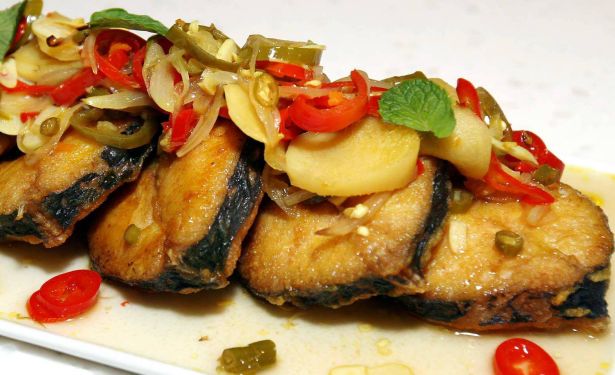Recipe Description
Any Canadian worth their salt will know what butter tarts are. They are basically pastry shells filled with a custard of eggs, butter and maple syrup, the quintessentially Canadian sweetener made by reducing the sap of the maple tree.
This indigenous product, which had been processed by the aboriginal people of North America long before the arrival of the Europeans, was quickly adopted by the settlers to sweeten a variety of confectionery due to the scarcity of other sugar sources in the New World.
I first encountered butter tarts when TV celebrity Anna Olson came to Malaysia for an Asian promotional tour of her cooking programme. She expounded effusively about butter tarts and how synonymous it is to the Canadian culture, especially its use of maple syrup as the main flavouring in combination with butter.
She explained that a good butter tart would have a good ratio of flaky shortcrust pastry to custard filling. The centre of the tart should be gooey and almost chewy, while the sugars at the top surface would caramelise into crunchy crystals.
This is achieved by baking at a high temperature first to puff the pastry, then at a lower temperature to slowly caramelise the custard filling, causing the top surface to dome while it is baking, and then to sink as it cools into crystalline perfection.
Although she had added raisins into her recipe, but she said that you may bake butter tarts on its own, or substitute with pecans, another product that is indigenous to North America. Purists would insist that no fruit or nuts be added into traditional butter tarts, provoking many polarising debates on what are acceptable additions to the iconic dessert.
Nevertheless, I have reproduced Anna Olson’s recipe here in its entirety but converted her measurements by weight rather than by volume. You may refer to her original recipe in our Kuali archives, https://www.kuali.com/recipe/raisin-butter-tarts/. Moreover, I have omitted the raisins and made butter tarts on their own because I wanted to know how they would taste unadulterated by other ingredients.
I must say they were awesome, albeit a bit rich. I suppose the addition of sour fruit or dry nuts would help even out the sweetness. But it has a unique flavour that lets us appreciate the diverse cooking traditions of the world that we live in.

Recipe Ingredient
- For shortcrust pastry:
- 300g all-purpose flour
- 50g granulated sugar
- 1 tsp salt
- 225g cold unsalted butter
- 1 large egg
- 2 tbsp cold water
- For Filling:
- 125g dark brown sugar
- ¾ cup maple syrup
- 115g unsalted butter, melted
- 2 large eggs
- 1 tsp white vinegar
- 1 tsp vanilla extract
Instructions
- For shortcrust pastry: Combine flour, sugar and salt in a mixing bowl.
- Cut the cold butter into small pieces and add to the flour, mix until the dough has a rough, crumbly texture.
- Add egg and water at once and mix until dough forms.
- Shape the dough into two logs, wrap in parchment paper and chill at least an hour.
- Preheat the oven to 200°C and lightly grease a 12-cup muffin tin with butter.
- Lightly dust a work surface with flour and unwrap pastry logs.
- Slice each log into six equal pieces. Roll each piece to about half-centimetre thickness and line each muffin cup.
- Crimp the edges of the pastry with a fork for a pretty effect. Chill lined muffin tin while preparing the filling.
- Whisk sugar, corn syrup and butter in a bowl until combined.
- Whisk in the eggs, then add the vinegar and vanilla and pour into the pastry in the muffin tin.
- Bake the tarts for five minutes, then reduce the heat to 190°C. Continue baking until butter tart filling starts to rise and form a dome after about 20 more minutes.
- Remove from the oven and allow tarts to cool before removing them from the tin.









